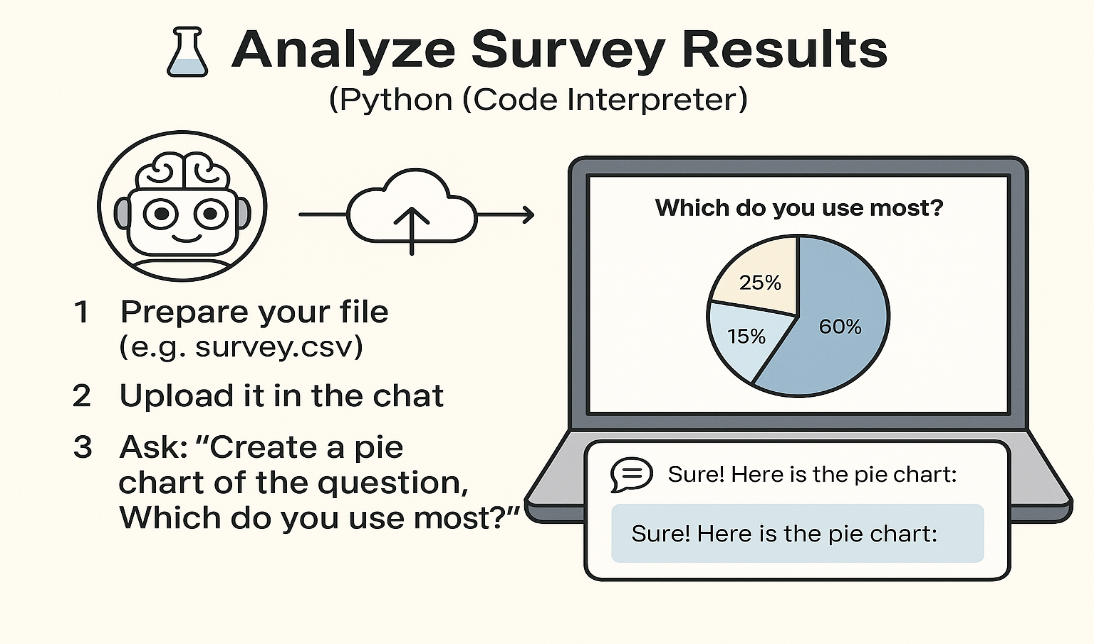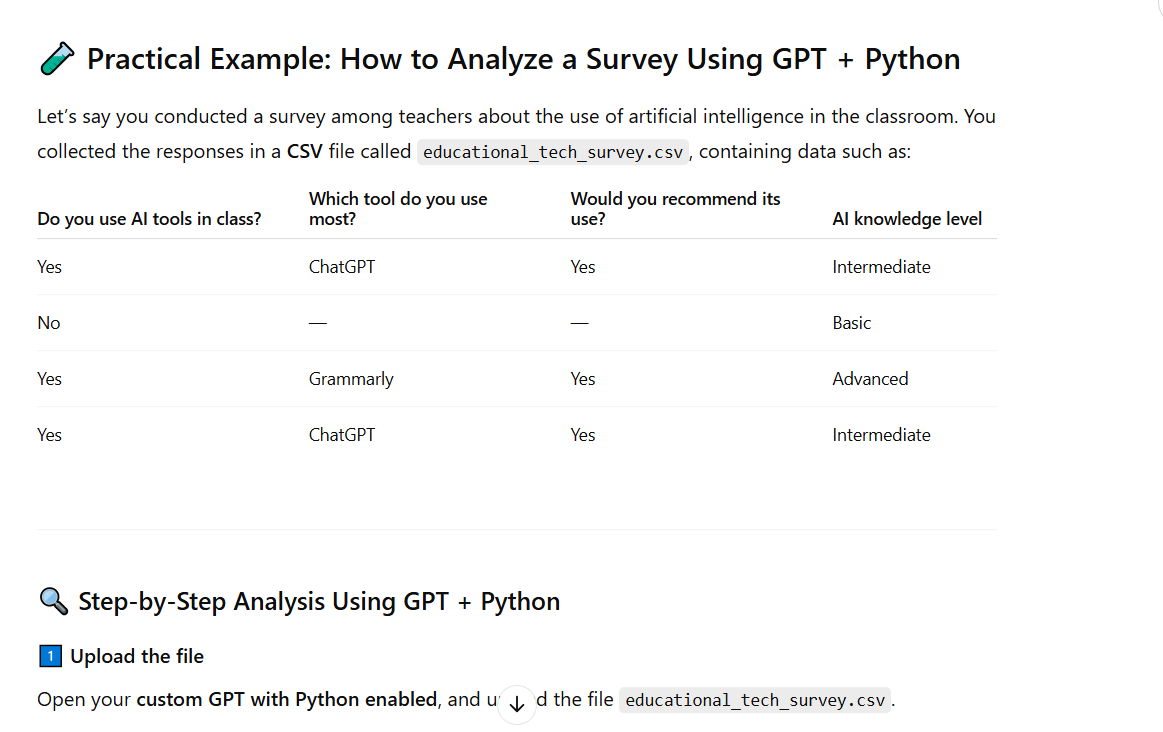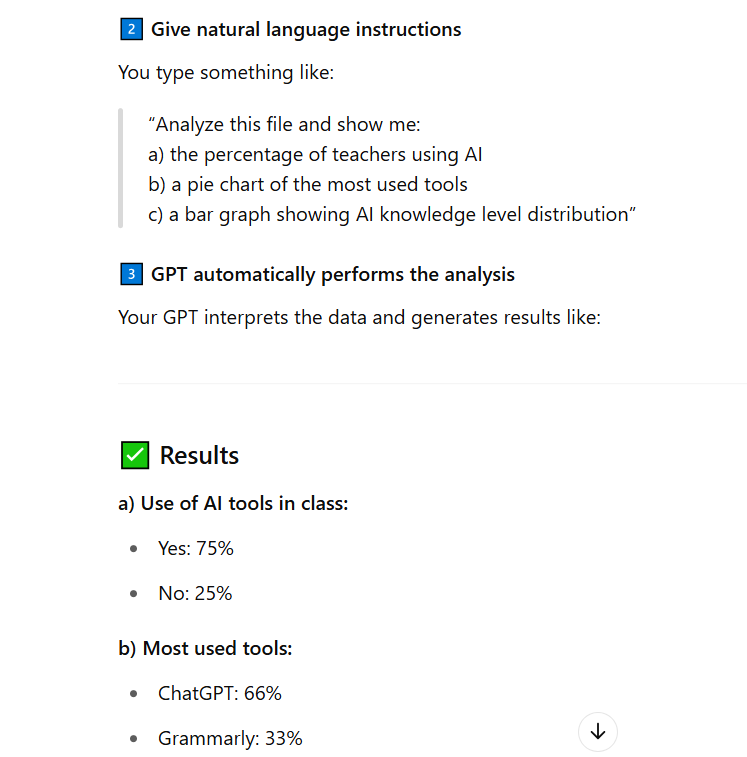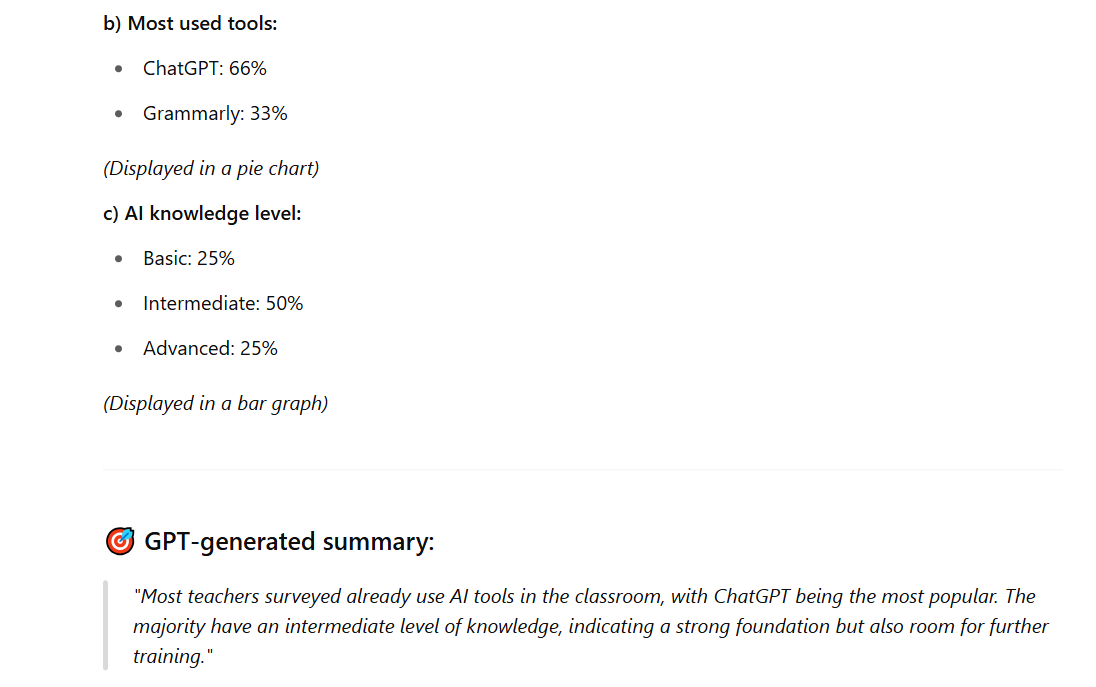🛠️ Advanced Tools to Supercharge Your GPT
Now that you know what custom GPTs can do, it's time to discover the real secret that turns them into high-level assistants: advanced tools. Enabling these tools is like giving your GPT superpowers. It no longer just answers based on what it already knows — now it can search, create, analyze, and learn alongside you. These features transform a simple conversation into a personalized, interactive, and much more powerful experience.
🌐 Web Browsing: Access to Real-Time Information
The web browsing feature in custom GPTs opens up a whole new world of possibilities. With it, your assistant doesn't just rely on what it was trained on — it can connect to the internet and access up-to-date, real-time information. This means that in addition to giving you answers based on its training, it can search for news, verify facts, read recent articles, explore academic sources, and provide reliable and useful links. It's like having a personal researcher working for you 24/7, without distractions or delays. This tool is especially helpful if you write about current topics, analyze trends, study, or work with constantly changing data. For example, when I was preparing an article about the best email marketing platforms in 2025, I wanted to compare recent opinions, prices, and features. I enabled web browsing in my GPT and asked: "Find me an up-to-date comparison of Mailchimp, Beehiiv, and Substack with pros and cons."
Within seconds, it delivered a well-structured summary with direct links to expert blogs and official websites. That easily saved me an hour of manual research. I’ve also used this tool to validate information — which is crucial if you want your content to stay credible. Suppose you’re writing about the impact of remote work and need recent statistics. Your GPT can find reliable data, cite sources, summarize new studies, and give you verified information. The same applies for comparing tools, finding tutorials, understanding new tech, or exploring unfamiliar subjects. The real power of web browsing isn’t just in searching — it’s in how your GPT filters, summarizes, and presents the information. You don’t need to read ten pages; it gives you the essentials. And you decide whether to go deeper. This feature turns your GPT into a true strategic ally: it informs you, saves time, and gives you real-world context to make decisions, learn, and create quality content. If you ever wished you had an assistant to search the best of the internet for you — now you can.
📊 Python (Code Interpreter): Effortless Analysis
One of the most impressive aspects of custom GPTs is the ability to activate tools like Python and web browsing, which take artificial intelligence far beyond simple conversation. These features turn your GPT into a true technical assistant and real-time researcher, capable of helping with calculations, data analysis, chart generation, or up-to-date web searches—all in natural language, with no need for coding skills. With the Python tool, you can ask your GPT to solve complex math problems, analyze databases, generate explanatory charts, or interpret statistics. For example, I used this feature to analyze survey results on educational technology. I simply uploaded a CSV file with the responses, asked for a pie chart showing the percentages, and within seconds I had a clear visualization ready for my article. You can also use it to solve equations step by step, automate repetitive tasks, or learn programming logic with guided assistance. Web browsing, on the other hand, is ideal when you need access to recent information or external sources. Imagine you're writing an article about artificial intelligence and want to explore the latest market trends. Your GPT can look up current studies, compare expert opinions, show you relevant articles, and link directly to trustworthy pages. In my case, I used it to research AI tools for content creators. My GPT brought me up-to-date comparisons, professional recommendations, and sources I never would have found so quickly on my own. Activating these tools not only improves the quality of your content—it empowers you as a creator, student, or professional. You’re combining the best of human thinking with the technical power of AI. And the best part: it’s accessible to everyone.




🧠 Memory: An Intelligence That Knows You and Grows With You
The memory feature in custom GPTs is one of the most significant advancements in the relationship between users and artificial intelligence. Unlike standard sessions where every conversation starts from scratch, activating memory allows your GPT to retain important information about you: your interests, goals, communication style, ongoing projects, language preferences, and much more. It’s like working with someone who truly knows you, learns alongside you, and improves daily to support you better. From my experience, this has completely changed the way I use ChatGPT. At first, every time I started a new conversation, I had to explain that I was writing a series of articles about artificial intelligence, my preferred tone, the type of audience I was targeting, and the tools I wanted to use. It felt like repeating instructions over and over. But once I activated memory, everything became smoother. My GPT remembered that I mostly write in Spanish, that my texts have an educational tone, and that I prefer clear structures with examples. That allowed it to instantly adapt to my style without needing constant reminders. It’s also incredibly useful for long-term projects. For example, if you’re developing a blog, a novel, or an online course, your GPT can follow the thread of your ideas, remind you what you’ve already worked on, suggest new directions, and even help maintain consistency across your writing. I use it to organize my newsletter ideas it remembers my past topics, titles I’ve already used, and the tone I prefer. It not only saves time, but also adds continuity and quality. And the best part is that you stay in control: you can see what it remembers, update that information, or delete it if your direction changes. Memory doesn’t just personalize your experience—it turns it into a real relationship between you and your GPT. It’s a tool that grows with you, and that makes a huge difference.
- How to use ChatGPT's new “Code Interpreter” feature: A comprehensive walkthrough of the Code Interpreter: see how to upload datasets, run Python scripts, generate charts, and perform data analysis all within ChatGPT
- ChatGPT Code Interpreter Tutorial - New Open AI GPT Model!: A practical tutorial showing how to use Python within ChatGPT: writing and executing code for calculations, data tasks, and visualizations interactively
- HOW TO use ChatGPT's Memory Feature?: A clear overview of ChatGPT’s memory functionality: how to activate it, manage what the system remembers about you, and use it for more personalized, context-aware conversations
🧩 Complementary Tools That Truly Make a Difference
As you explore custom GPTs, you’ll discover tools that truly transform the way you work. These aren’t just features—they boost your productivity, spark your creativity, and help you move forward with greater clarity. Your assistant is no longer just a text generator; it becomes a true collaborator that adapts to you. Each tool adds new capabilities that make complex tasks simple—and even enjoyable. Together, they create a smart environment that pushes you to do more and do it better. Because now, you have a powerful tool working with you, not just for you.